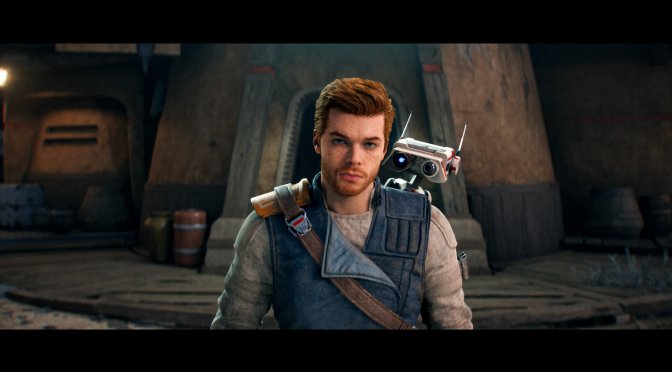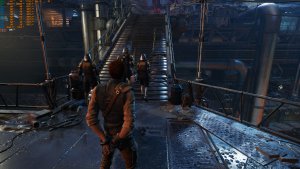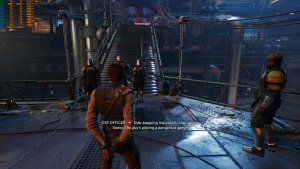Star Wars Jedi: Survivor has just been released on PC, so we’ve decided to give it a go. And, to be honest, I was pleasantly surprised by its performance on our PC system. After numerous reports about the game under-utilizing the GPU, we were shocked to see our NVIDIA RTX 4090 being used to its fullest.
Now before continuing, we should detail the PC system we used for our initial tests. So, for the following benchmark, we used an AMD Ryzen 9 7950X3D, 32GB of DDR5 at 6000Mhz, and NVIDIA’s RTX 4090. We also used Windows 10 64-bit, and the GeForce 531.61 driver. Yes, you read that right. Although we haven’t upgraded yet to the latest NVIDIA driver, the game runs fine.
Below you can find a video showcasing the jail sequence running at 4K with AMD FSR 2.0 on Epic Settings with Ray Tracing. And, as you can see, the game never drops below 85fps. In fact, without recording the game, we can get constant 90fps. Furthermore, the NVIDIA RTX 4090 is being used at 98% throughout the benchmark scene.
But how were we able to achieve such smooth framerates? For starters, we’ve disabled SMT (that’s Hyper-Threading for Intel owners). Since the game does not appear to take advantage of a lot of CPU threads, it makes sense to disable SMT for a much better experience.
What’s crucial to note here, though, is that the game has major issues when changing its graphics settings. At the end of the video, we highlight this issue. Upon disabling and re-enabling RT, our GPU usage, in the exact same scene, drops from 98% to 77%. And that’s precisely why a lot of PC gamers cannot see any performance increase when changing graphics settings. In order to fix this GPU utilization issue, you’ll have to close the game and re-launch it.
For instance, without RT at 4K/Epic Settings with FSR 2.0, we were getting 100fps with 87% GPU utilization. After closing and re-launching the game, we were getting 115fps with 95% GPU utilization. In fact, there were some scenes that ran better by up to 20-25fps just by re-launching the game. Below you can find such an example.
We are currently in the process of installing the game on our older Intel Core i9 9900K PC system. Therefore, expect a new article in which we’ll discuss the game’s performance on that system.
In conclusion, Star Wars Jedi: Survivor can run with constant 90fps on high-end PC systems. Do note that these results are from the jail area. According to reports, Koboh is the most demanding area which is the one we’ll be using for our final benchmarks. So, consider these results are early tests (as we’ve seen a lot of people having issues even in this early area). And as said, there is currently a bug that can impact in-game performance when changing graphics settings. So, whenever you do such a change, you should re-launch the game, otherwise your GPU will be under-utilized.
Stay tuned for more!

John is the founder and Editor in Chief at DSOGaming. He is a PC gaming fan and highly supports the modding and indie communities. Before creating DSOGaming, John worked on numerous gaming websites. While he is a die-hard PC gamer, his gaming roots can be found on consoles. John loved – and still does – the 16-bit consoles, and considers SNES to be one of the best consoles. Still, the PC platform won him over consoles. That was mainly due to 3DFX and its iconic dedicated 3D accelerator graphics card, Voodoo 2. John has also written a higher degree thesis on the “The Evolution of PC graphics cards.”
Contact: Email



